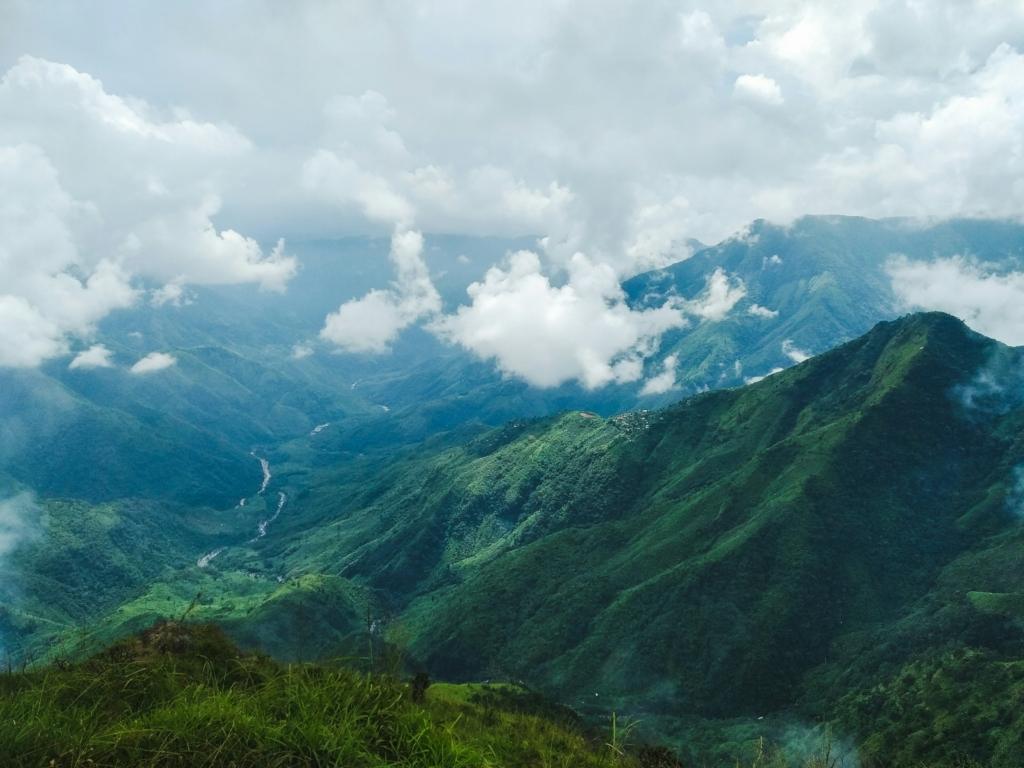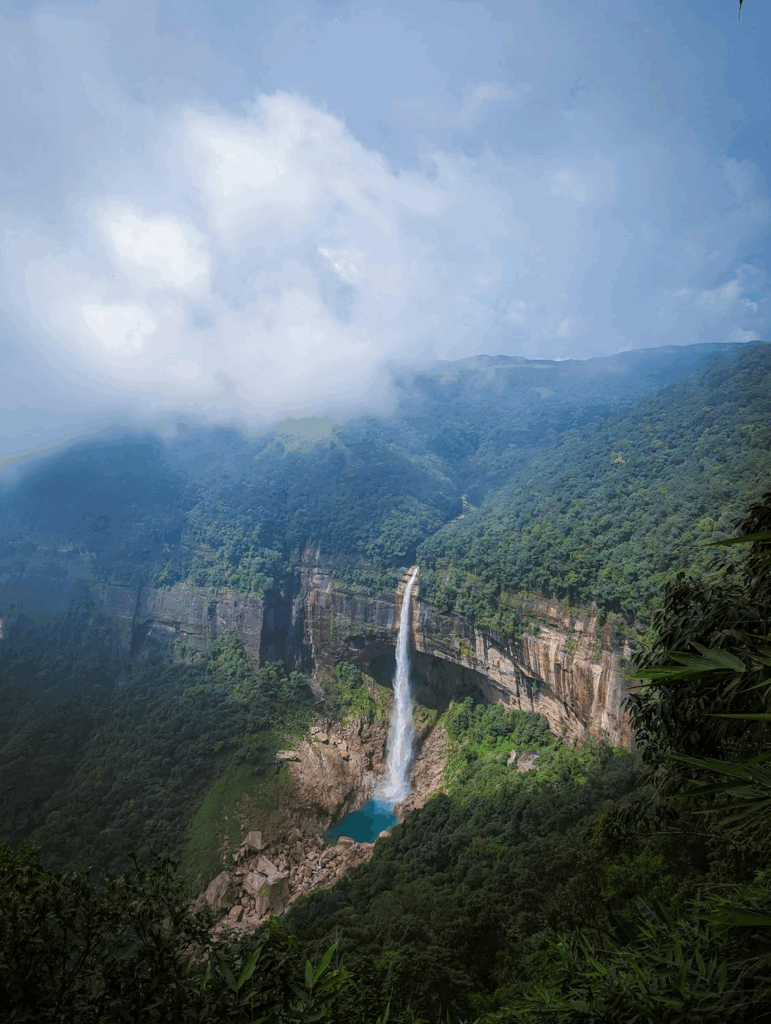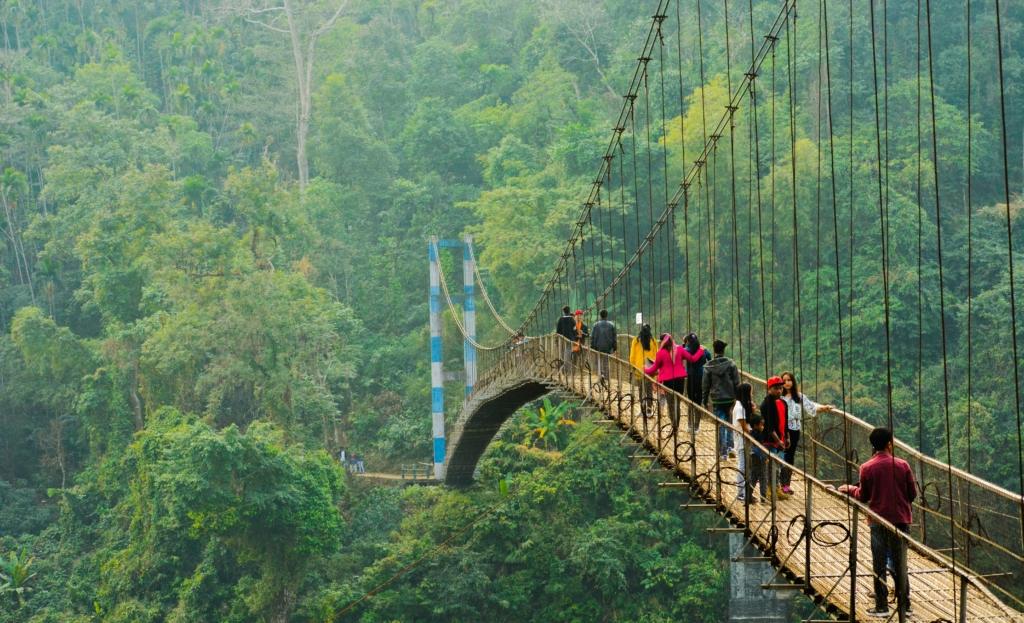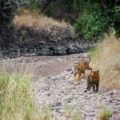Monsoon Guide to Mawsynram, Meghalaya (2025): Explore The Wettest Place on Earth

There are monsoon destinations in India, and then there’s Mawsynram — where rainfall isn’t just weather, it’s a way of life. Tucked away in the East Khasi Hills of Meghalaya, this unassuming village holds the remarkable distinction of being the wettest place on Earth, receiving over 11,000 mm of rainfall annually. If you’re planning a monsoon adventure that goes beyond the ordinary hill stations in India, Mawsynram offers an experience that’s both humbling and exhilarating.
The thing about Mawsynram during monsoon is that it transforms into a living, breathing testament to nature’s raw power. From June to September, when most of India seeks shelter from the rains, this remote village in Meghalaya becomes a pilgrimage site for those who want to witness monsoons in their most spectacular form.
In this Blog
Why Visit Meghalaya in Monsoon?

Iftekhar Nibir
Meghalaya isn’t just another hill station in the rains—it’s where the monsoon becomes an experience. The clouds don’t just pass by here—they settle in, wrapping the hills in mist, feeding the waterfalls, and turning every trail into a lush, living postcard. This is the season when Meghalaya feels most alive, most untouched.
What makes it special? It’s not about sightseeing in the traditional sense. It’s about slowing down and tuning in—to the sound of rain falling on tin roofs, the scent of wet pine forests, and the sight of ancient cliffs drenched in pure beauty.
And right at the heart of this monsoon magic is Mawsynram, the wettest place on Earth. During July and August, this quiet town transforms into a surreal landscape. Think endless rain, moss-covered rocks, whispering caves, and greenery so rich it almost glows. It’s not just beautiful—it’s raw, dramatic, and humbling.
If you’re looking to escape the predictable and embrace something rare, Meghalaya in July, August and September offers an experience worth sharing with your loved ones.
Understanding Mawsynram’s Monsoon Magic
Mawsynram’s claim to fame isn’t just about records — it’s about experiencing rainfall in a way that most people never will. The village sits at an altitude of 1,400 metres, perfectly positioned to catch the moisture-laden clouds that roll in from the Bay of Bengal. During peak monsoon months, particularly July and August, the village can receive over 1,000mm of rainfall in a single month.
What makes Mawsynram truly special is how the locals have adapted to this extraordinary climate. You’ll see traditional Khasi houses built on stilts, ingenious drainage systems carved into rock faces, and the famous knups — waterproof cloaks made from bamboo and banana leaves that locals have used for generations. These aren’t just survival tools; they’re cultural artifacts that tell the story of living in harmony with extreme weather.
The monsoon here isn’t the gentle, romantic drizzle of Bollywood films. It’s powerful, persistent, and profound. Waterfalls appear overnight where none existed, rivers swell to impressive torrents, and the very air seems to shimmer with moisture. Yet there’s something deeply meditative about being in a place where nature displays such overwhelming force.
Weather in Mawsynram in July and August 2025
Monsoon is in full swing during July and August in Mawsynram Meghalaya, with average rainfall exceeding 1,000 mm per month. Expect daily downpours, thick fog, and cool temperatures ranging between 15°C and 22°C.
Humidity is high, and the rain can be relentless—but that’s exactly what draws travellers seeking an offbeat, rain-drenched escape. Carry waterproof gear and quick-dry clothes to stay comfortable.
Pro Tip: Rain usually eases in short spells around noon or late afternoon—perfect for short treks or photo walks.
Best Time to Visit Meghalaya During Monsoon

If you’re planning to experience Mawsynram’s monsoon magic, timing is crucial. The village receives rainfall from May through October, but the peak monsoon period from June to September offers the most dramatic experience. July typically sees the heaviest downpours, making it both the most challenging and rewarding time to visit.
For first-time visitors, August often strikes the perfect balance — you’ll experience substantial rainfall without the extreme conditions of peak July. The weather in Mawsynram during August hovers around 20-25°C, with humidity levels that make everything feel lush and alive.
Pro tip: Always check weather forecasts and local conditions before travelling. What locals consider “light rain” might be heavier than anything you’ve experienced elsewhere. The village can become temporarily inaccessible during particularly intense rainfall periods, so flexibility in your travel plans is essential.
Top Things to Do in Mawsynram
Explore the Rainforest Trails: Guided treks take you through misty trails, wild orchids, and gushing mini-waterfalls.
Check Out the Mawsynram Village Viewpoint: Offers panoramic views of the lush East Khasi Hills under heavy cloud cover.
Take a Day Trip to Elephant Falls: Located near Shillong, this three-tier waterfall is at its most powerful in the monsoon.
Soak in the Silence: Sometimes, the best thing to do in Mawsynram is to slow down, sip hot tea, and watch the rain fall endlessly over the valley.How to Reach Mawsynram
Mawsynram is located around 60 km southwest of Shillong, the capital of Meghalaya.
Travel Tip: Roads are narrow and slippery during monsoon—start early in the day and avoid driving after dark.
Nearest Airport to Mawsynram: Shillong Airport (Umroi) is the closest, about 80 km away. Guwahati Airport is better connected and about 150 km from Shillong.
By Road: You can hire a private taxi or take a shared cab from Shillong. The journey takes around 2.5 hours depending on rain and road conditions.
Places to Visit in Mawsynram During Monsoon
Mawjymbuin Cave
The crown jewel of Mawsynram attractions, Mawjymbuin Cave takes on an entirely different character during monsoon season. This sacred cave, home to enormous stalactites and stalagmites, becomes even more mystical when accessed through curtains of rain. The most famous formation — a natural Shivalinga that attracts pilgrims year-round — seems to come alive with the constant sound of dripping water echoing through the limestone chambers.
During monsoon, the approach to the cave involves navigating slippery paths and impromptu waterfalls, adding an element of adventure to your visit. Local Khasi guides are invaluable here, not just for navigation but for sharing the folklore and spiritual significance of this sacred space. The cave maintains a cool temperature year-round, providing welcome respite from the humidity outside.
Krem Puri Cave System
For those seeking a more adventurous cave experience, the Krem Puri cave system offers some of the most spectacular underground formations in Meghalaya. During monsoon, these caves become even more dramatic as underground streams swell and create new temporary waterfalls within the caverns.
The cave system requires proper equipment and experienced guides, making it perfect for travelers who want to combine their monsoon experience with serious adventure. The acoustic properties of these caves during monsoon create an otherworldly soundscape — the distant rumble of rain mixing with underground water flow creates a natural symphony that’s impossible to replicate anywhere else.
Mawsynram Village and Traditional Life
Sometimes the most profound experiences come from simply observing daily life in extraordinary circumstances. Mawsynram village during monsoon offers glimpses into how communities have adapted to extreme weather patterns over centuries. The traditional Khasi architecture, with houses designed to channel water away from living spaces, is both practical and beautiful.
Local markets operate in covered areas, with vendors selling everything from traditional knups to local specialties like jadoh (rice cooked with meat) and tungrymbai (fermented soybean curry). These aren’t tourist attractions in the conventional sense, but they offer authentic insights into monsoon living that you won’t find in guidebooks.
Monsoon Food Experiences in Mawsynram

The cuisine of Mawsynram during monsoon season reflects both the abundance and challenges of the season. With fresh vegetables thriving in the constant moisture and rivers teeming with fish, local food takes on unique characteristics during these months.
Jadoh becomes heartier during monsoon, often prepared with locally sourced pork or chicken to provide the extra energy needed for navigating wet conditions. The fermented fish preparations popular in Khasi cuisine become particularly flavorful during this season, as the humidity accelerates fermentation processes in fascinating ways.
Local homestays and small eateries serve traditional monsoon beverages like kyat (rice beer) and various herbal teas made from indigenous plants that thrive during the rainy season. These aren’t just drinks; they’re cultural experiences that connect you to centuries of monsoon survival wisdom.
Don’t miss trying the seasonal bamboo shoot preparations — monsoon is when these are at their most tender and flavorful. Combined with locally grown black sesame, they create dishes that are both nutritious and perfectly adapted to the humid climate.
Essential Monsoon Travel Tips
1. Visiting the wettest place on Earth during monsoon requires preparation that goes beyond typical travel planning. Waterproof everything isn’t just recommended — it’s essential. Pack your electronics in multiple layers of waterproof protection, and consider bringing backup devices.
2. Footwear can make or break your Mawsynram experience. Local markets sell traditional Khasi footwear designed for wet conditions, and these are often more effective than expensive hiking boots. The key is grip and drainage rather than waterproofing, as you’ll inevitably get wet anyway.
3. Transportation becomes an adventure in itself during monsoon. Roads can become impassable during heavy downpours, and what locals call “landslip risks” are real considerations. Always travel with experienced local drivers who understand the terrain and can make safe decisions about route timing.
4. Most importantly, embrace the unpredictability. Mawsynram during monsoon operates on nature’s schedule, not yours. Flight delays, extended stays, and completely changed itineraries are part of the authentic experience. The locals have a wonderful phrase: “Rain time, God’s time” — a philosophy that serves visitors well.
Beyond Mawsynram: Exploring Nearby Monsoon Wonders in Meghalaya
While Mawsynram is your primary destination, the broader Meghalaya region offers complementary monsoon experiences. Cherrapunje, the former holder of the wettest place title, is just 15 kilometres away and offers the famous living root bridges that become particularly spectacular during monsoon season.
Shillong, about 60 kilometres from Mawsynram, serves as an excellent base for acclimatization and provides urban amenities alongside monsoon charm. The capital city’s colonial architecture and modern facilities offer a gentler introduction to Meghalaya’s monsoon culture before you venture into Mawsynram’s more intense environment.
Mawsynram during monsoon isn’t for everyone, and that’s precisely what makes it extraordinary. This isn’t a destination for luxury resort experiences or Instagram-perfect moments. It’s a place where you’ll be humbled by nature’s power, amazed by human adaptability, and possibly soaked to the skin while having one of the most memorable travel experiences of your life.
The memories you’ll create here — listening to conversations drowned out by rainfall, watching entire landscapes transform before your eyes, sharing tea with locals who treat the world’s most extreme weather as simply another day — these are the experiences that redefine what travel can be.
So pack your sense of adventure along with your rain gear, and prepare to discover why sometimes the most challenging destinations offer the most rewarding experiences. Mawsynram awaits, with all the power and beauty that only the wettest place on Earth can offer.
Must-Visit Places in Meghalaya During the Monsoon
While Mawsynram is the crown jewel for rain lovers, Meghalaya is full of monsoon gems that turn a short escape into a complete experience. If you’re planning a trip, here are a few places worth adding to your itinerary:
1. Cherrapunji (Sohra)
Famous for its living root bridges and majestic waterfalls, Cherrapunji is just a couple of hours from Mawsynram and makes for a perfect base.
- Don’t miss: Nohkalikai Falls, Seven Sisters Falls, Arwah Caves
- Why visit Cherrapunji in monsoon: The waterfalls are roaring, and the root bridges feel like something out of a rainforest fairytale.
2. Shillong
The capital city offers the best of both worlds—natural beauty and urban comfort. It’s a great pitstop before heading deeper into the hills.
- Don’t miss: Ward’s Lake, Shillong Peak, Laitlum Canyons
- Why visit Shillong in monsoon: The pine-lined roads and colonial cottages look straight out of a storybook when it rains.
3. Dawki & Shnongpdeng
While the crystal-clear river here is famous in winter, monsoon adds a different kind of charm—with rolling hills and dramatic skies.
- Don’t miss: Boat rides on the Umngot River, border town view at Tamabil
- Why go in monsoon: Less crowded, and the surrounding landscape is strikingly lush.

4. Mawlynnong – Asia’s Cleanest Village
A short drive from Cherrapunji, this quiet village is all about slow, mindful travel.
- Don’t miss: Skywalk viewpoint, bamboo bridges, clean village lanes
- Why go in monsoon: Everything sparkles—literally. Rain makes this already spotless village glow.
5. Laitlum Canyons
Just outside Shillong, this lesser-known spot offers jaw-dropping valley views—when the mist lifts.
- Don’t miss: Hiking trails, panoramic lookout points
- Why go in monsoon: The canyons wear a blanket of clouds and greenery, making every photo look surreal.
6. Double Decker Living Root Bridge (Nongriat Trek)
If you’re up for some adventure, trek down to Nongriat from Tyrna village.
- Don’t miss: The iconic double-decker root bridge, natural pools
- Why go in monsoon: The forest trail is straight out of a monsoon dream—but wear good shoes, it’s slippery!
Travel Tip: Plan your Meghalaya trip route as Shillong – Mawsynram – Cherrapunji – Dawki – Mawlynnong for a complete circuit. And always keep buffer time—the rain is unpredictable, and that’s always part of the charm!





